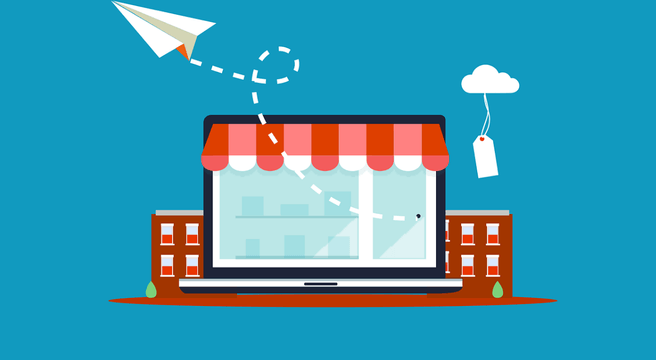David Ogilvy once said that, in the world of business, it’s useless to be a creative thinker unless you can also sell what you create. This sentiment is doubly true in the world of eCommerce. No matter how good your product is, it’s not going to sell in an online market place without great marketing to back it up.
It can be difficult though to know where to start with digital marketing. There’s a lot of methods you could choose from, and many of them work, but few of them are as tried and tested as the formula I’m about to share with you.
You’ll see this approach all over the internet, and have probably participated in it without even realising. It’s ecommerce marketing 101. Let’s dive straight in.
Step one: Build your audience
Building an audience for your marketing is incredibly simple, but not always easy. All you have to do is generate high-value content, and get it where people can see it. This means creating blog posts, videos, webinars and social media posts that people are going to find useful.
The difficulty is that every other company out there is trying to do the same thing. The internet is inundated with content; how do you make yours stand out?
There’s a thousand different answers to this question, and the method you choose will go on to define your brand identity as your company evolves. However, here’s one super simple approach that I find particularly useful for building relationships when starting out.
1. Find existing communities in your niche with lots of traffic. This could be on a forum like Reddit, a Facebook group, or an independent website.
2. Ask an open question to find out what type of information people are looking for. Keep your question specific to the area of interest of your product, but open enough to encourage a lot of answers. For example, if you’re selling a range of high quality cake tins and baking pans, a good question might be “What’s the top 3 problems you have when trying a new cake recipe for the first time?”.
3. Collect together the top 5 most common problems.
4. Create and post one piece of content to solve each problem. You can create it in any format, just make sure that it’s SEO optimised.
5. Return to your community and post your content, targeting the original questioner in your response. Try to post the content both publicly and privately, for example, on a forum you can respond both in the original thread and via private message to questioners.
This kind of solicited, highly targeted marketing is great for building one-on-one relationships between customers and your brand. When customers see that you’re creating high value content specifically for them, they’re very likely to share your content within their own communities. You can even ask them (politely) if they’d mind sharing your content.
Step two: Create lead magnet
Now that you’ve got an audience with some sharing activity, the major search engines should start picking up on your sites and content. If you’ve seen strong increases in traffic, now is the time to start gathering email addresses to start marketing directly to customers.
Email marketing is one of the best ways to reach out and connect with customers in their personal space – it’s one of the most powerful and high converting channels. However, you’ll need to encourage them to opt-in in order to legally send them promotional emails.
The best way to do this is with a ‘lead magnet’ – a high value piece of content that users need to sign up for in order to access. Your magnet could take the form of any kind of content, from long-form instructional booklets, videos, webinar invitations or a series of high value emails. The key is to create something that your future customers will find genuinely useful. Once you’ve established yourself as a source of useful information for your consumers, it’s time to start marketing your product.
Step three: Launch an ‘irresistible offer’
In the early days of your business, customer acquisition is going to be the name of the game. You need to establish yourself as a known brand in your niche, and the best way to do that is to bring in as many paying customers as possible. Many companies choose to do this by cutting their profit margins thinly, or even, in cases like Amazon, selling products at a loss. You don’t have to go to that extreme, but cutting down on immediate profits for long term gains is worth the trade off.
To put it simply, we’re going to present your customer with an offer they can’t refuse. Offer a package of massive value with a single, super-easy buying process. Don’t be scared to go overboard here by offering freebies and guarantees.
Make sure the positive outcomes of the product are as plain as day and that the perceived value far outweighs the cost. Remember to use everything you know about pricing to deliver the highest value for the lowest possible cost.
It’s up to you to make your offer seem as enticing to your target audience as possible.
Step four: Upsell
If your customer has bought in to your irresistible offer, they’ve experienced the value of your products already and know that you can be trusted as a retailer. Now is the time to upsell or cross-sell them on products with a higher profit margin. You can do this by contacting them with news about further products as soon as they purchase, or you can stage a ‘product launch’ to garner interest.
Upselling is much easier if you sell consumable products that your customers may want to stock up on. However, if you’re struggling for products to upsell or cross-sell, consider partnering with an affiliate to gain access to a greater product catalogue. Think carefully about what your customers might need after buying your product and do your best to offer these too.
Step five: Reward loyalty
Here’s where you can really start to engineer massive gains for your business. A strong loyalty scheme can foster exponential growth as your customers start to market your product for you, turning their friends and family into customers. Moreover, the cost of retaining existing customers is far smaller than the cost of acquiring new ones, so you’re saving whilst you grow!
There’s a lot of great resources out there for loyalty schemes, from paid service providers to simple WordPress plugins. It’s important to remember though, that not all loyalty schemes work the same way as your Tesco Clubcard. There’s a vast universe of different loyalty strategies and approaches, from birthday messages to competitions and freebies. Whichever strategy you choose, try to focus on strategies that enable and incentivise your customers to reach out to others and connect them with your brand. And above all, make sure that your content and rewards provide value for customers at all times.
For examples of great digital loyalty schemes check out companies like AirBnB and Uber – some of the fastest growing companies of the our generation.
So that’s it! Five simple steps; easy to understand, but difficult to master. Remember that every individual section in this guide has no limit on the amount of resources and optimisation you can pour into it. Try to spot the weak spots in your current funnel and always measure investments against the return in value they can bring your business.
Thanks for reading. Now get out there and start marketing your product!





